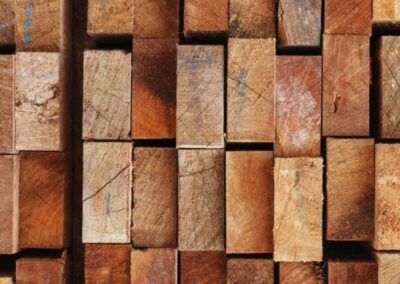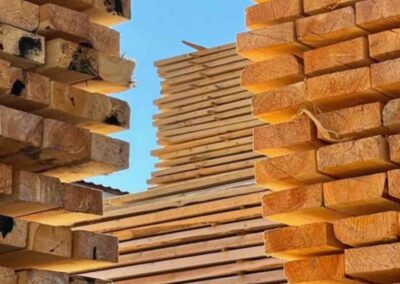Have you ever wondered how a wooden handle is made? If you are intrigued by the steps of production of this traditional and ancient tool as part of mankind itself, you are on the right track. Although wooden handles are apparently simple to produce, they have to go through several steps and strict controls. Let’s take a look at the process!
How to create a Foppoli Bramin wooden handle
First of all, the production stages and steps for the creation of a Foppoli Bramin wooden handle start from a history defined by competence, knowhow, passion and dedication. Without this background, it is not possible to create quality wooden handles designed for the safety and comfort of those who work.
Here are the different steps and stages in our production:
- Wood selection – As we have already explained in this article, choosing the right wood is fundamental in order to create a high-quality handle suitable for the use for which it is intended. The wood is selected to ensure strength and durability: the most commonly used is beechwood, but other types of wood such as ash, poplar and linden are also used. These are sturdy and yet flexible wood types, easy to work with.
- Wood drying – After all, it is well known: water and dampness are real enemies of wood! That’s why the wood on our handles is left to dry for a specific period of time, precisely to ensure that there is no moisture inside the handle.
- Wood cutting – Once the wood has been selected and dried, it is time to cut it to size to obtain the desired length for the handle depending on the type of tool to which it will be destined. These pieces are then shaped with specialized machines that create the basic shape of the handle.
- Woodworking – This step includes true artisan craftsmanship and expertise. The wood is processed to eliminate imperfections and make it smooth and uniform. This can be done manually with tools such as knives and files, or with machines such as cutters and milling machines for straight or curved handles. Specifically, turning is a technique that involves rotating the piece of wood on a horizontal axis and removing excess material with a blade. Milling is a technique that uses a rotating milling cutter to create the desired shape.
- Refinishing – We are now in the final stages. The handle is finished with careful and thorough sanding to make the surface smooth, comfortable and improve its aesthetic appearance. In the Foppoli Bramin production process, the handles are not treated with any type of paint or chemical solvent. The finishing of our handles is done through a double sanding that makes them more comfortable to the touch and more aesthetically pleasing, or using only water-based paints that have a significantly lower environmental impact.
- Quality control – The wooden handle is now ready, but it cannot leave the factory before rigorous checks are carried out. Before being packaged and shipped, each handle is checked to make sure it is sturdy, durable and meets Foppoli Bramin quality standards.
- Packaging and shipping – Once all the other steps phases are finished, the handles are proudly packaged and shipped to customers: in Foppoli Bramin we know that we have created a unique and high-quality product!
The assembly of the wooden handle of the tool, however, is a step that does not take place in the factory but rather in the factories of our clients and customers.
In other words, the production process of Foppoli Bramin wooden handles is an expression of the competence, knowhow, passion and dedication of our staff. Only in this way can we ensure that each handle meets the company’s quality standards.




